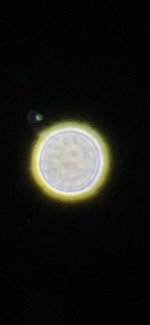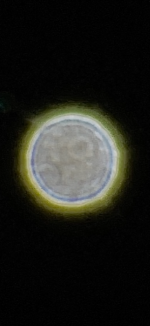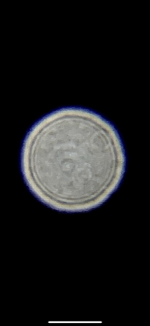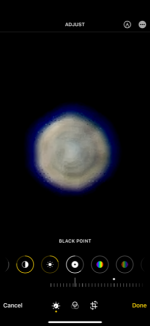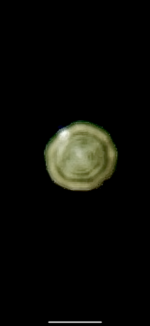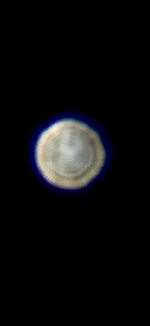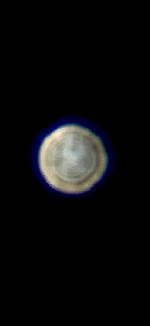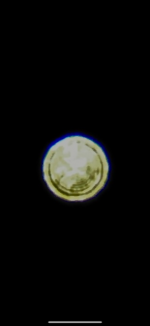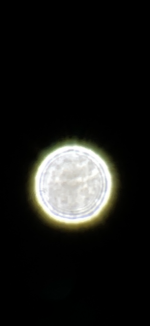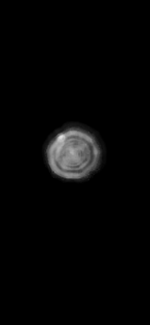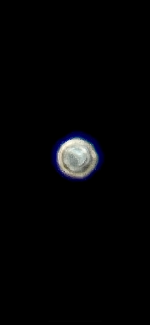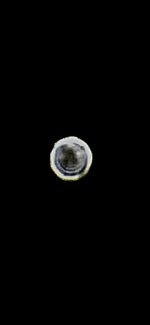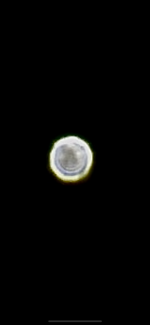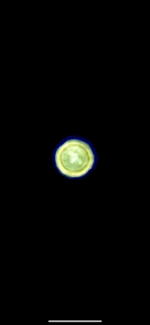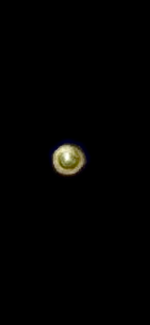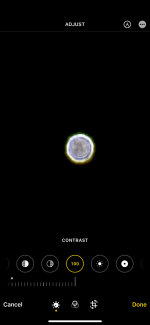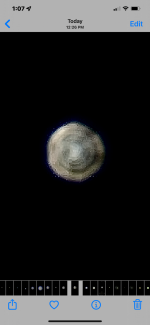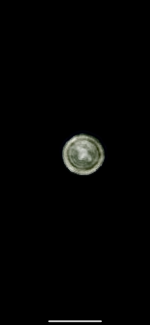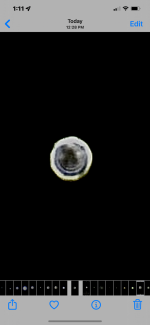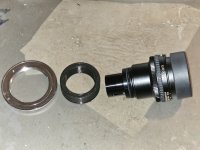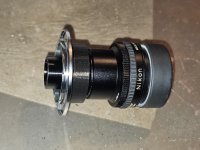countryman george
Member

Did you use a star for this?
I apologize, but this is the best I can do with my phone. I have the scope at 60x, and the phone camera at 4x optical zoom. I then cropped it to get this size image. I tried to keep the exposure as low as possible, but regardless the image showed up slightly smeared on the phone screen. I de-focused approximately 1/8th turn both directions.
The image at the ep is much crisper. The "oblongness", vertically outside of focus, and horizontally inside, is definitely present as at the ep. Other than the smearing of the rings, everything is pretty true to life in these photos.
I believe the rings are actually truly concentric, meaning that they are evenly spaced from each other as they expand from the center. Sort of like an actual bullseye target, but that is roughly oval rather than perfectly circular.
Due to the "rays" spiking off of the outer ring, I wonder about roughness, which might not be a huge deal. (?).
Also, inside vs outside shows more of the "roughness" and broken lines or zones (?) in the outside image.
Obviously, there is the brighter image inside vs the outside, which is not good, but how bad is it?
For what it is worth, the in focus star shows a bit of the classic seagull type pattern as it comes to focus. More pronounced coming into focus from one way vs the other. I tried looking at the image with and without my glasses. It looks the same to me. So, I am guessing that it is the optics and not my eye.
How bad is it, if you can even tell from these images? Thank you!
View attachment 1415308
View attachment 1415309





